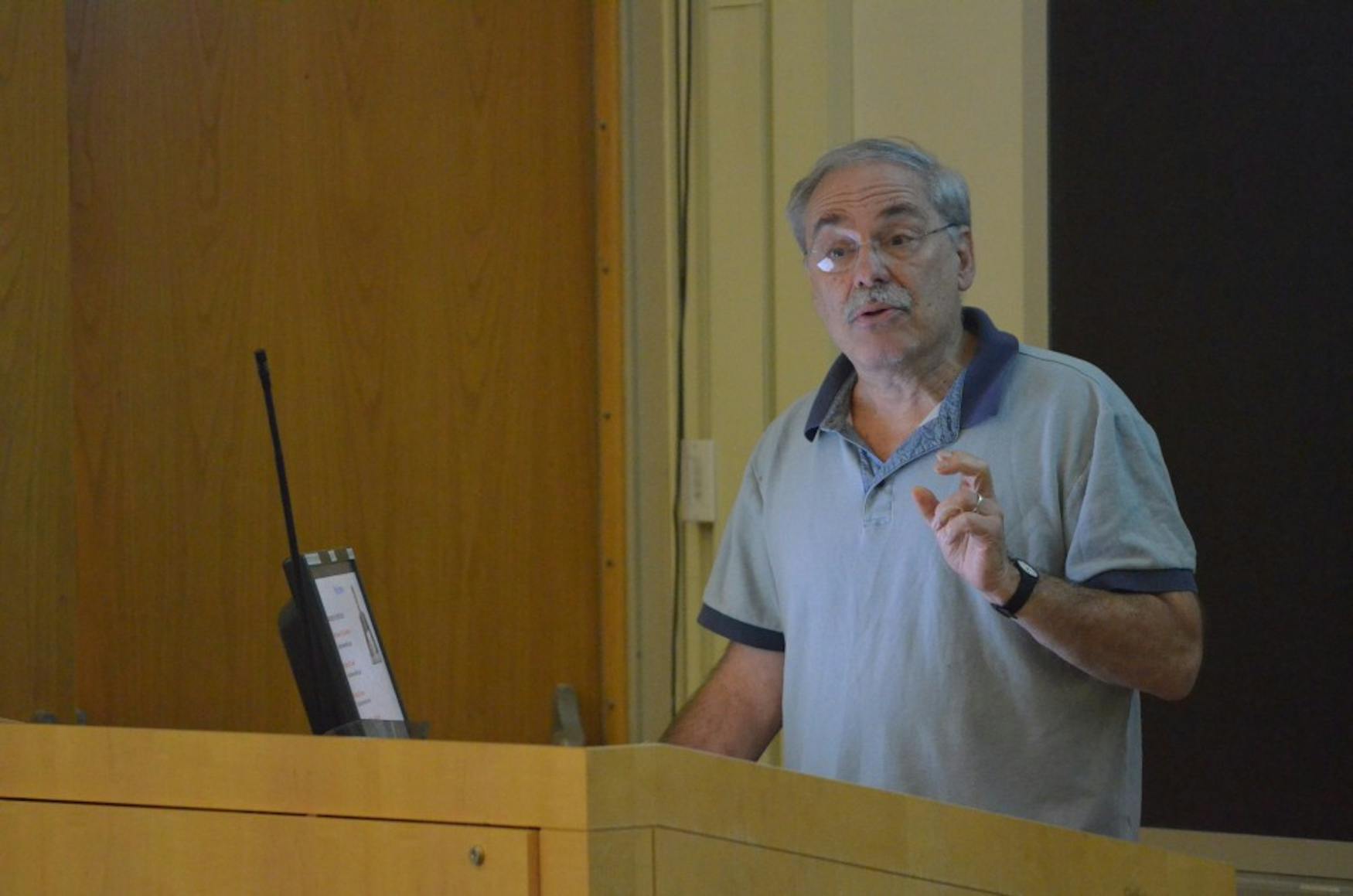Biochemistry professor lectures on scientific “crackpottery”
Prof. Chris Miller (BCHM) might be a biologist by profession, but in a lecture he gave on March 3 2014 at Oxford University, he tackled a subject that he said, in the opening words of the presentation, he had wanted to study for years: scientific crackpots.
Last Friday, Oct. 10, Miller reprised his lecture “Mountebanks, Con-men, and Heretics: An Epistemology of Scientific Crackpottery” at Brandeis in an event sponsored by the Biochemistry and Biological Physics departments as well as the Office of the Provost. At the event, Miller delivered the presentation to a mixed audience of students, faculty and fellow scientists. The lecture, which he had originally devised for his work as Oxford’s Newton-Abraham visiting professor in medical, biological and chemical sciences, was several decades in the making.
“I really had a hard time in coming up with a topic for what would be appealing to a public British audience,” Miller said during Friday’s lecture. “I somehow came up with this idea of talking about scientific crackpottery, and in fact, it’s a subject that I have been more or less subconsciously kicking around in my head for the last 40 years, from the time when I was a graduate student with an adviser, who, I came to realize during the course of my graduate studies, was a classic scientific crackpot.”
Merriam-Webster defines crackpots as those “given to eccentric or lunatic notions.” Scientific crackpots are similar in a sense and, as Miller describes in his lecture, are heretics that cling to their theories, failing to remain open to the process of peer-review and criticism that is essential to the scientific community.
According to Miller’s lecture, the idea of crackpottery boils down to recognizing what he calls the three types of “scientific outliers”—mountebanks, or eloquent public speakers, or, as he called them, “hot air artists;” con men, or non-scientists who often fabricate data; and heretics, or suppliers of unwelcome opinions that go against the status quo.
Miller cited many examples of con men and heretics, providing examples such as William Summerlin—a dermatologist who fabricated successful skin transplants in genetically unrelated mice by painting the “grafts” on—for con men, Barbara McClintock—who pioneered the notion of chromosomal crossover—for the heroic heretic and Gilbert Ling—who has sought to disprove that cells contain sodium-potassium pumps, among many other things—as an example of a crackpot heretic. Additionally, while he did not give specific names of mountebanks in his lecture, Miller cited common claims such as “we will understand the human brain within a few years” and “we have almost found the cure for cancer” as examples of phrases used by mountebanks in the present-day.
That being said, Miller put emphasis on the fact that his lecture did not mean to elevate any one “phenotype” of scientific outlier over another but rather to cross-examine them and consider the characteristics of each.
“This is not really about bad versus good science,” Miller was quoted as saying in a March 4 BrandeisNOW article. “Rather it’s an examination of what I see as four different outlier scientific phenotypes: the mountebank, the con man, and two types of heretics.”
Miller focused the brunt of his lecture on these heretics, searching for the fine line between what he calls “heroes”—those scientists who acknowledge the possibility that their theories might be false—and their opposites, the “crackpots.”
In searching for the fine line, Miller said that he tried to “identify features common among crackpots and distinguish them from the features common to heroes.”
While Miller acknowledged that there is no one feature that “infallibly” makes a scientist a crackpot or a hero, he claimed that “there are certain indicators that are signifiers that might raise one’s suspicions” about a scientist’s research and theories.
Drawing on many cases of scientific “heroes” and “crackpots,” Miller pointed out several features common to each type of scientist. According to Miller, most crackpots hold a theory or belief long after their peers’ research and the scientific community has denounced the belief.Yet, Miller told the audience, being incorrect is not a trait unique to the crackpot. “You don’t have to be right to be a hero,” Miller said. “You just have to be open and willing to amend your beliefs as information from nature comes in.”
Ultimately, Miller’s presentation, though scientific in both nature and subject, was not without the occasional quip and use of humor as he attempted to highlight the differences between the two types of heretics: heroes and crackpot.
“Crackpots often offer syllogisms like, ‘Einstein was laughed at; Einstein was a genius. I am laughed at, therefore I am a genius.’” Miller said. “To paraphrase Carl Sagan, I would just like to point out: they laughed at Barbara McClintock, they laughed at Lewis Heilbrunn, they also laughed at Bozo the Clown.”
Editor's Note: The article initially incorrectly identified Prof. Chris Miller as a professor in Biology. He is, in fact, a professor in Biochemistry.



Please note All comments are eligible for publication in The Justice.